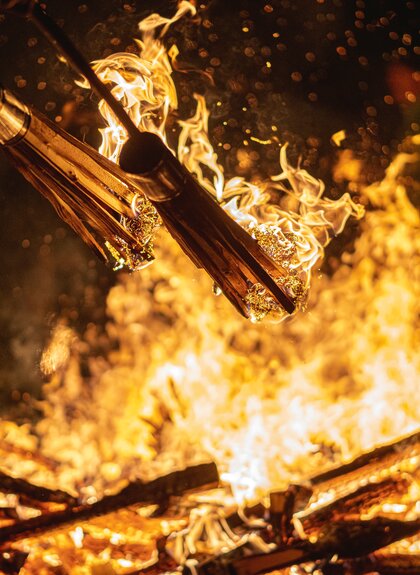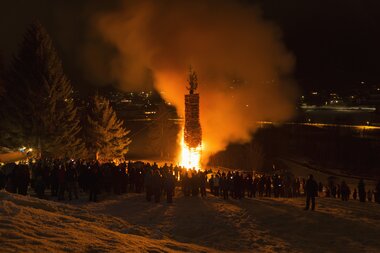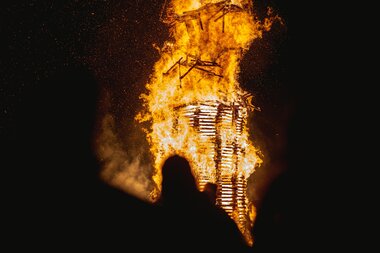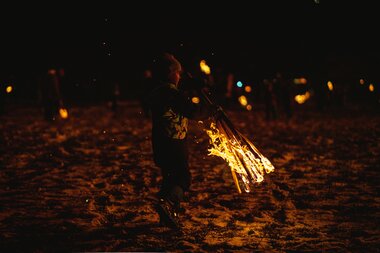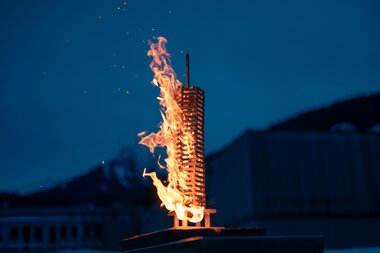Bonfires in the Montafon
One of the oldest customs in the Montafon is the traditional "Funken" ("spark").
When fire drives away winter and welcomes spring.
One of the oldest customs in the Montafon: on the first Sunday after carnival, the flames of the sparks blaze up to 30 meters high into the sky. The "demons of winter" are driven away and the increasing light of spring is welcomed with the burning of sparks and the swinging of torches - a ritual full of symbolism and tradition.
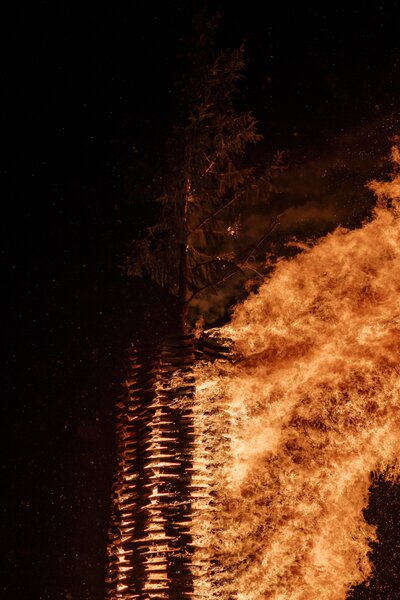
-
Construction
The construction requires a lot of work, averaging 700 to 800 hours. The spark guilds build the spark tree and stack wood around it. The carefully stacked woodpile is then filled with brushwood, straw and old Christmas trees. - Bonfire guard
On Saturday night, a spark watch keeps an eye on things to ensure that the wooden structure is not set alight prematurely by lads from neighbouring villages. However, this traditional prank is more than just a minor offence and is now even punishable by law. -
Burning
At nightfall, the spark is finally lit under the watchful eyes of the villagers.
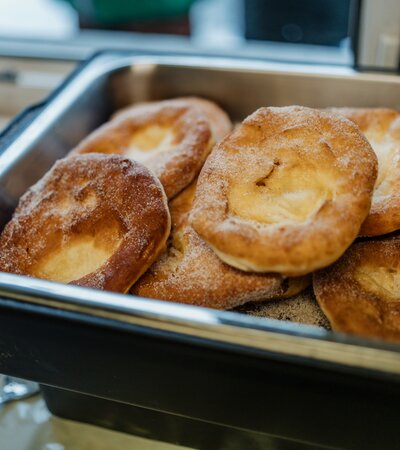
The bonfire specialty
"To ensure that the sweet Funka-Küachli turn out perfectly, keep pouring hot fat over them in the pan or toss them carefully."
Erich Morscher from Tschagguns
To the recipeSmall but mighty - the mini sparks
The "Funken" tradition is now also available in miniature - with the handmade mini sparks.
The project has been run by Caritas Werkstätte Montafon since 2024. For the participants, it is more than just craftsmanship - it is meaningful work that encourages and brings joy. Based on the principle of "learning by doing", unique mini sparks are created that are made with a lot of passion.
Take a piece of Montafon home with you - the mini sparks are available now.
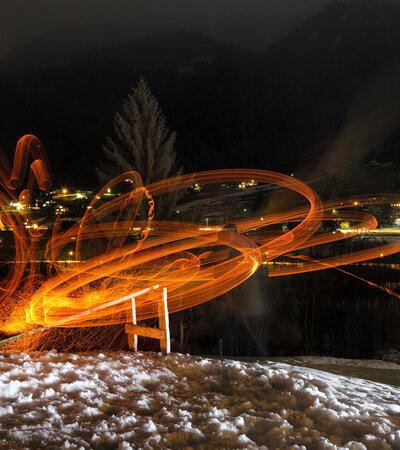
Did you know that...
target shooting in Gortipohl has been declared a UNESCO intangible heritage site?
Unique in the Montafon: target shooting in Gortipohl has been passed down from generation to generation for centuries. Originally a pagan ritual, it is now an important part of village life - and has been on UNESCO's list of national cultural heritage since June 2016.
Learn more
